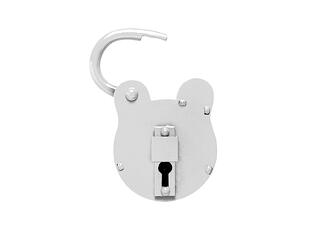 There are a lot of acronyms and other complex words that get thrown around a lot when there's talk of
There are a lot of acronyms and other complex words that get thrown around a lot when there's talk of
networking, routers, and your Internet connection. You probably already know most of the terms when they're talked about, especially when it comes to having a router and then looking for connections on your computer for your wireless connection. However, there might be some terms that your networking professional uses that only confuses you--but don't worry, here's a quick guide to help you out.
The biggest term that will always come up, no matter what, is WLAN. Also known as "wireless local area network," this term is used to describe essentially any wireless network that your computer uses to access the Internet. It is most commonly known as WiFi, your friendly wireless Internet network that practically any office and home uses.

WLAN Explained
WiFi vs. WLAN
There is a common misconception that WiFi is completely different than WLAN, when it is actually not. In fact, think of WLAN as the main category to fit all kinds of different wireless networks into--WiFi just happens to be the most standardized. There are other connections such as VoWiFi, which is VoIP based, and WPA or WiFi Protected Access. All of the different types depends on what kind of service you utilize, but of course the most common is going to be WiFi or WPA.
Contrary to popular belief, WiFi doesn't stand for "wireless fidelity," but in fact stands for the radio frequency IEEE 802.11x. This is because WiFi uses the power of radio waves in order to provide high speed wireless Internet to anyone with the right hardware. The name is also a trademarked and registered name by the WiFi Alliance, too!
Other Types of Connections
At first, there was only the WiFi standard of 2.4GHz 802.11b, but after a few years of different practices and changes, the WiFi Alliance decided to include much more to the list: 802.11a, dual-band, and other 802.11 standards. This provides faster and more reliable wireless lan connections for you to use, especially if you have a bustling office that needs different channels that aren't as frequently used and thus very busy with a slower connection.
However, connection speeds can also be hindered by the actual location of your office. Sometimes an area won't be able to support the radio frequencies needed for high speed Internet because of interference, but this happens rarely with business-class Internet connections.
Connection Security
Perhaps the most important thing to know about WLAN and WiFi connections is that they need to always be secured with a password and firewalls. You see, when you set up a new WiFi 
channel and connection, it is completely open and can be detected with any sort of nearby WiFi-enabled device. That device then can access your network, and if you're sharing any sensitive documents in an open folder on that network, then you're in big trouble. Not only that, but nearby devices that aren't part of your network can actually slow down your connection considerably if you don't secure your network.
All WiFi connections need a password to access, first and foremost. Then, you need to always have an encryption program that encrypts all of your data being sent through the wireless network, otherwise people have the potential to steal the data. Finally, there are firewalls for extra safety. All of this ensures that your wireless lan connections are completely safe and users outside of your network will have a much harder time breaking in.
Wireless connections are an essential staple in any business these days, so it's good to know the basics of what's happening behind the scenes with your data and how it is being transferred. Don't feel left out when the talk of WLAN and WiFi comes up.











